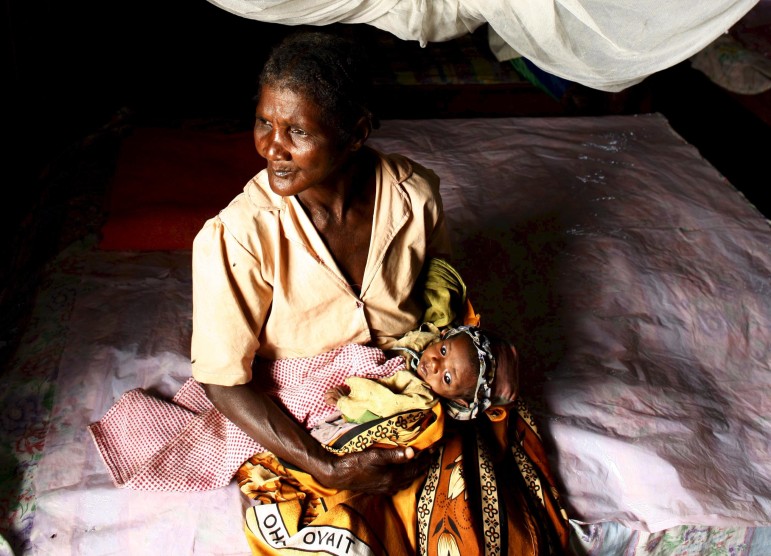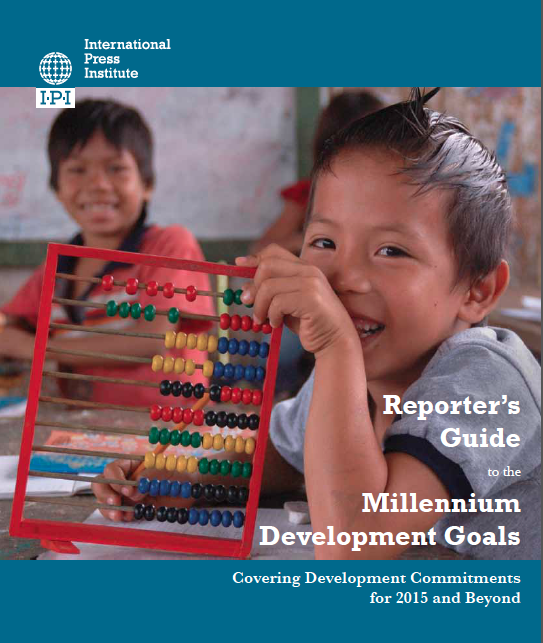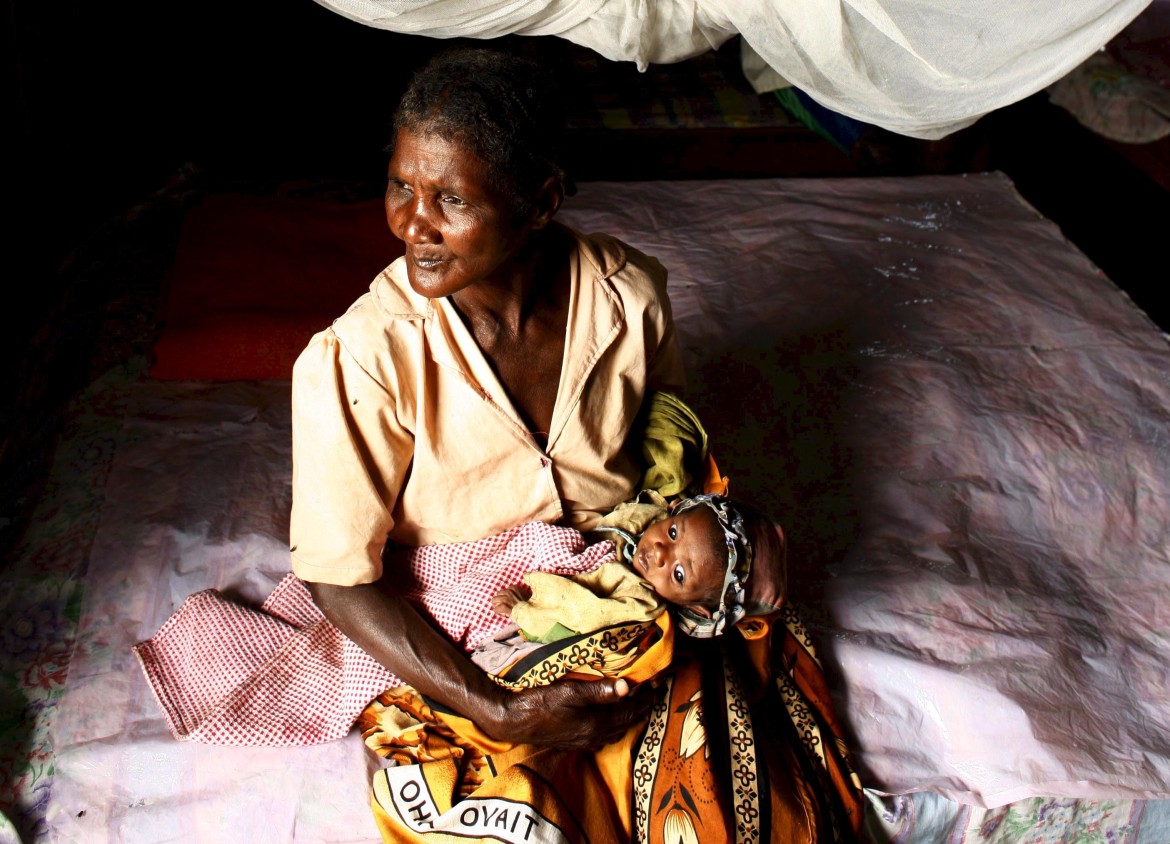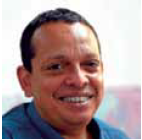

Food for Thought: Tips on Covering Hunger
 Part 6 of a series GIJN is excerpting from the Reporter’s Guide to the Millennium Development Goals: Covering Development Commitments for 2015 and Beyond, published by the International Press Institute.
Part 6 of a series GIJN is excerpting from the Reporter’s Guide to the Millennium Development Goals: Covering Development Commitments for 2015 and Beyond, published by the International Press Institute.
When stories of a food crisis emerge, it is tempting to ask if the problem stems from the lack of grain. I followed this lead during my early years as a reporter until I read about an event that took place in 1970. That year, the Nobel Peace Prize was awarded to Norman Borlaug. The American agronomist was recognised for his work that combined science and new agriculture techniques to help save millions from hunger. His research—heralding the Green Revolution—paved the way for agriculture built on high-yield outputs.
Borlaug’s efforts to increase cereal production, beginning in Mexico and then, during the 1960s, taking root in India and Pakistan, came at a time of global fear. The media was running stories of the “population bomb,” of agriculture being unable to feed the millions of growing mouths in the developing world, of global instability triggered by the Malthusian nightmare. A near-famine in India in 1966 served as a stark warning of bleak times that could lie ahead.When stories of a food crisis emerge, it is tempting to ask if the problem stems from the lack of grain. I followed this lead during my early years as a reporter until I read about an event that took place in 1970. That year, the Nobel Peace Prize was awarded to Norman Borlaug. The American agronomist was recognized for his work that combined science and new agriculture techniques to help save millions from hunger. His research—heralding the Green Revolution—paved the way for agriculture built on high-yield outputs.
Fortunately, the stories that appeared in the media have moved on from such dire predictions. The foundation that the Green Revolution laid in the agriculture belts across Asia, which has seen rice output triple, paved the way for this shift in the narrative. It was a major milestone in the Asian and the global journey towards food security: agricultural scientists had the answers to boost grain supplies to meet the expanding population. Yuan Longping, China’s leading agricultural scientist, is among the current crop of innovators. The 80-year-old’s new strain of hybrid rice yielded a harvest of 13.9 tons of grain per hectare in 2011, a world record.
Yet why is Asia home to 62 percent of the world’s hungry? Why, in 2011, were a further 64 million people in Asia expected to join the existing 600 million people living in absolute poverty on this continent? Why does one still occasionally hear the word “famine” here? Why are 14,000 children dying of hunger every day?
The list of questions for journalists covering the story of hunger in the developing world should not stop there. We should be prepared to look for new leads and new links to expose one of the greatest paradoxes of our time: Why in this age of sufficient food supply does there continue to be food scarcity? Reporters are challenged to shed more light on the food distribution system and the related network of factors—including market mechanisms—that have deprived basic meals to millions in Asia, Africa, and Latin America. And what about tariff barriers imposed by governments to manipulate the price of food?
Each country gives rise to its own set of questions that a curious and enterprising reporter should be drawn to. What are the choke points? Who or what is behind it? Why? The reasons—ranging from land-grabbing, corruption, or political interference—will reveal just how complex reporting about hunger is.
Shifting population trends, with more people moving from rural areas to cities, cannot be ignored either. Researchers have pointed out that a spike in food prices makes those dependent on the cash economy in urban settings more vulnerable than their kin in the hinterlands, who can always tap nature.
In Cambodia, for instance, an inquiry to uncover the reasons behind hunger may confirm that the problem has a rural face. And the quest for an explanation may point to a disturbing trend in this Southeast Asian nation still struggling to get on its feet after two decades of conflict: the rampant spread of land-grabbing by powerful companies to convert agricultural land into cash crops, such as sugar plantations. What has made such acquisitions easy, journalists in Cambodia found out, was the lack of land-title deeds, all of which were destroyed during the years of the genocidal Khmer Rouge regime in the 1970s.
In neighboring Burma, once the world’s leading rice exporter, chronic hunger stems from political obstacles placed in the way of grain being transported from the fields and mills to markets and consumers. Choking the domestic rice-supply root in this country, also known as Myanmar, has been a way for the military dictatorships who have ruled for nearly 50 years to deprive the country’s ethnic minorities of basic foods. Consequently, over 30 percent of children under five years are malnourished and underweight, a number as bad as that of Cambodia.
Research findings by UN agencies like the Food and Agriculture Organization (FAO) are useful when factors such as high oil prices—which affect the price of fertilizer, pesticides, and the food-transport chain—push food prices up. An enterprising reporter will naturally use this data to dig up more, adding local color, by sniffing around on the streets. Following the buying habits of people in a local market—how much meat over how much grain, for instance—to establish the extent of the crisis is one route. These micro-moments unfold in other settings too, such as roadside food stalls or restaurants. Interviewing food vendors is helpful to paint a more comprehensive picture of hunger caused by inflation. There, the question that should be asked is: What have people stopped buying?
Some may turn to NGOs and grassroots groups who have chronicled the story of hunger in the communities they work in. Such sources become invaluable when investigating stories in countries where political oppression is palpable. They are the only witnesses a reporter has to depend on to confirm a story of deprivation, as some have done when exposing discrimination faced by ethnic minorities in Laos.
The significance of such reportage has broader political ramifications. It serves as a benchmark to measure how open and democratic a country is. It is an index that combines two freedoms: freedom of the press and freedom from hunger. After all Amartya Sen, another Nobel Prize laureate, drew a parallel when reflecting on the Bengal famine, in which between 1.5 million to four million people died of starvation, malnutrition, or disease.
“No substantial famine has ever occurred in any independent country with a democratic form of government and a relatively free press,” the renowned Indian economist wrote. “The Bengal famine of 1943, which I witnessed as a child, was made viable not only by the lack of democracy in colonial India, but also by severe restrictions on reporting and criticism imposed on the Indian press.”
Resources
The World Food Programme (WFP) offers resources that reporters chasing a hunger story in times of conflict will find useful. The global “hunger hotspots” chart it reveals annually raises the alarm about communities lacking in the basic nutrition requirements of 2,100 calories a day. In addition, it raises the question of whether communities in countries experiencing strife are denied food aid by combatants. This happens when humanitarian assistance in the form of grain is siphoned out through a corrupt mechanism, as investigators found out in Afghanistan.
Marwaan Macan-Markar is a Sri Lankan journalist who covered that South Asian nation’s ethnic conflict for local newspapers before joining the Inter Press Service (IPS) as a correspondent in 1999. He was first assigned to the agency’s World Desk in Mexico City and has since been based in Bangkok, covering Southeast Asia. He has reported from over 15 countries, writing from the front lines of insurgencies, political upheavals, human rights violations, peace talks, natural disasters, climate change, economic development, hunger and poverty, new diseases like bird flu, and emerging trends in Islam, among other current issues.
Excerpted from Reporter’s Guide to the Millennium Development Goals: Covering Development Commitments for 2015 and Beyond. Agreed to in 2000, the UN Millennium Goals comprise an ambitious agenda to improve quality of life around the world, focusing on such issues as poverty, gender equality, and education. This unique manual, available in four languages, offers journalists practical tips on covering these critical areas as we near the 15th anniversary of the goals. Twenty-one journalists across six continents contributed to the report, including several active in GIJN. We are grateful to the publisher, the International Press Institute, for permission to publish the series, and to the European Press Photo Agency and EFE Agency for permission to publish the accompanying photos.












